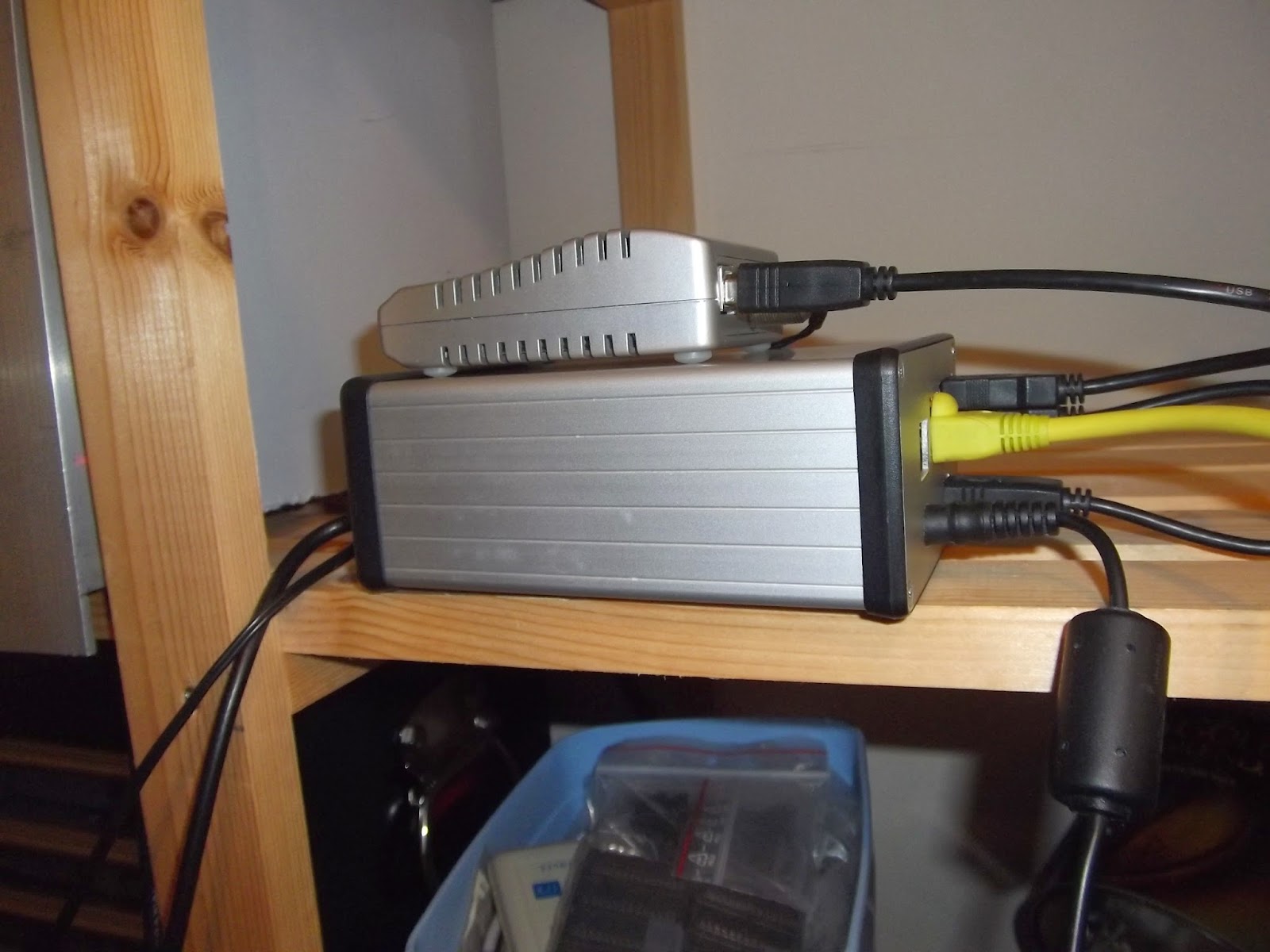 |
| Sharp BS2F7VZ0164 Tuner |
I added a cheap Chinese EZ-USB module (also available on eBay). To produce a
standalone DVB-S/S2 receiver.
So far I have been able to read and write to the various registers in the chips on
both the tuner and USB2 board using a modified version of the firmware I wrote
for Express. Usually under Linux this is all done using a Kernel module however
I am doing it in user space using libusb, just like I do with Express.
The demodulator chip used in this module is the STB0899 which is the same one
used in the excellent Tutioune software by Jean Pierre F6DZP. Evariste F5OEO
is also working on code for this tuner module as is Rob M0DTS. There is also a
Kernel module available for Linux. This all means that there is more support
available for this rather elderly chip than for many others. The only thing that
needs figuring out is how to program the frontend as it is different to the
TT budget S2-1600 and S2-3200 modules currently being used
I am hoping to use the work done by our fellow Amateurs to get my unit going.
There is no point in re-inventing the wheel so I will be lazy and let them sort
out the configuration information for me.
Unfortunately manufacturers of digital TV chip sets do not like to share information
on their chips with the likes of us Amateurs. It is possible to implement receivers
in software and in fact it has been done. Unfortunatly because of the nature of the
algorithms used it is much more efficient to implement them in an ASIC consuming
a few milliwatts rather than a large PC consuming hundreds of watts.
I have looked at doing this in an FPGA but the cost both in hardware and in time
would be prohibitive.
There are some multi-standard chips available now that do DVB-T/T2/S/S2 and
it would be really nice to use these but while it is always possible to find someone
that will sell you the chips getting hold of the programming information is
something else. While Amateurs follow consumer standards we are always
likely to have these problems.
The broadcasters are trying again to get mobile TV chips into smartphones, DVB-H
was a bit of a failure but now they are pushing DVB-T2 for mobile TV. Sony I
believe are about to release a mobile with TV support so we shall see if they have
any more luck this time. Ron Economos W6RZ has done a nice implemetation of
DVB-T2 for GNURadio, so we are ready!.

